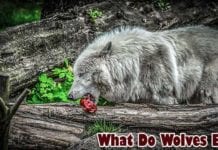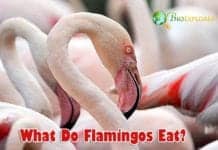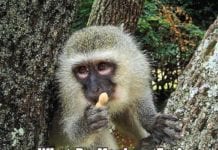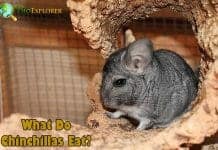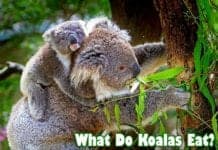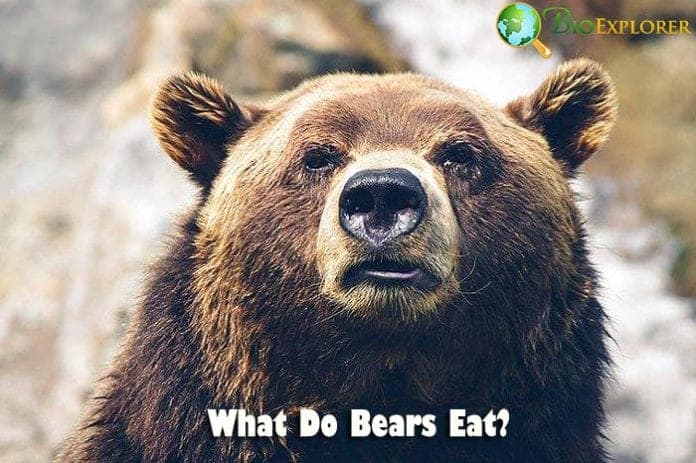
Bears are mammals classified under the family Ursidae. These animals can be large, growing to lengths of about 8 feet tall, or they can be small, growing to about 4 feet tall and weighing about 60 pounds.
Most bear species are omnivores, consuming meat and plant matter like berries. Interestingly, it is worth noting that some bear species display diet preferences; for example, the polar bears are almost exclusively carnivorous, preferring a diet made up of Seals, while the panda bears are almost entirely vegetarian.
This page will shed light on the different bear species, mostly covering what they eat and how they hunt. The article will also provide insights into when bears eat, how often bears eat, the amount of food they consume, what eats bears (i.e., predators), and their role in the animal food chain.
Table of Contents
- What Do Bears Eat?
- What Do Grizzly Bears Eat?
- What Do Sloth Bears eat?
- What Do Spectacled Bears eat?
- What Do Sun Bears Eat?
- What Do American Black Bears eat?
- What Do Panda Bears Eat?
- When Do Bears Eat?
- How Often Do Bears Eat?
- What Eats Bears?
- Do Bears Predate Humans?
- What Role Do Bears Play in the Animal Food Chain?
What Do Bears Eat?
| Polar bear | Ursus maritimus | Carnivorous diet (Ringed seals, bearded seals, frail juvenile seals & foxes) |
| Brown bear / Grizzly bear | Ursus Arctos | Generalist feeder (berries, nuts, moss, grasses, sedges, roots, insects, fungi, ground squirrels, mice, and marmots, salmon, mountain, and goats) |
| Sloth bear | Melursus ursinus | Omnivorous (Mainly insects such as termites, ants, fruits) |
| Spectacled bear / Andean bear | Tremarctos ornatus | A vegetarian diet (berries, cacti, fungi, bromeliads, palm nuts, and other fruits) |
| Sun Bear | Ursus malayanus | Omnivorous diet (berries, fruits, roots, other vegetation, and a meaty delicacy obtained from hunting insects, rodents, lizards, and small birds) |
| American black bear | Ursus americanus | A vegetarian diet (plant matter mainly fruits and vegetables) |
| Panda bear | Ailuropoda melanoleuca | Bamboo shoots, stems, and leaves, pikas & small rodents. |
![]()
What Do Polar Bears Eat?
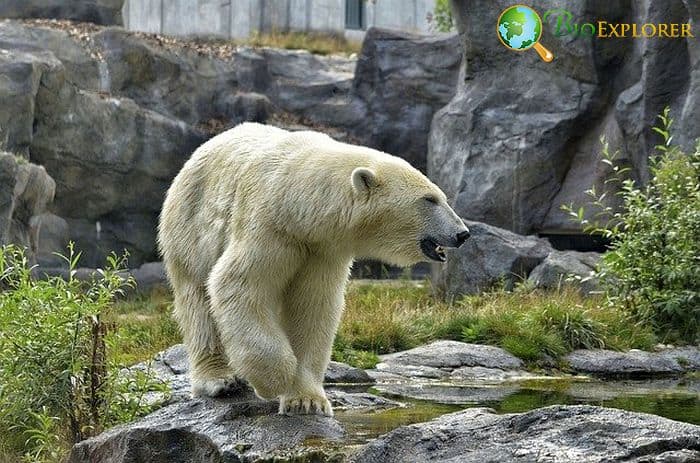
Polar bears are mostly found north of the Arctic Circle at the North Pole in regions like Greenland, Alaska, Canada, Russia, and Norway.
| Animalia | Carnivora | Ursidae | Ursus | Ursus maritimus |
- Compared to the other bear species, polar bears are almost entirely carnivorous, their diet mainly composed of the ringed seals. These bears can also be found eating the bearded seals.
- Regarding their hunting strategy, polar bears have many. For example, this bear species displays the still hunting technique. They lie motionless next to a breathing hole, waiting for a seal to emerge.
- When the seal surfaces, the polar bear would then act with haste to bite its head or upper body and then proceed to flip the prey on ice.
- Polar bears may also opt to stalk seals on land when they emerge from the sea and opt to bask on the sea ice.
- When the polar bear is sure of its unsuspecting target, it then charges towards it before tearing it into pieces.
- Another hunting strategy deployed by polar bears is referred to as the aquatic stalk. The polar bear will swim towards a seal that is basking on ice. When it is in close range, it suddenly emerges from the water and uses its claws to capture the unsuspecting seal.
- Stalking seal birth lairs are the other hunting strategy that comes in handy for polar bears. In this strategy, the polar bear would hang out next to the seal’s birthing lairs, particularly during spring, and capture the frail juvenile seals.
- The polar bear’s strong sense of smell comes in handy to help them locate seal birth lairs.
Suggested Reading:
What Do Polar Bears Eat?
![]()
What Do Grizzly Bears Eat?
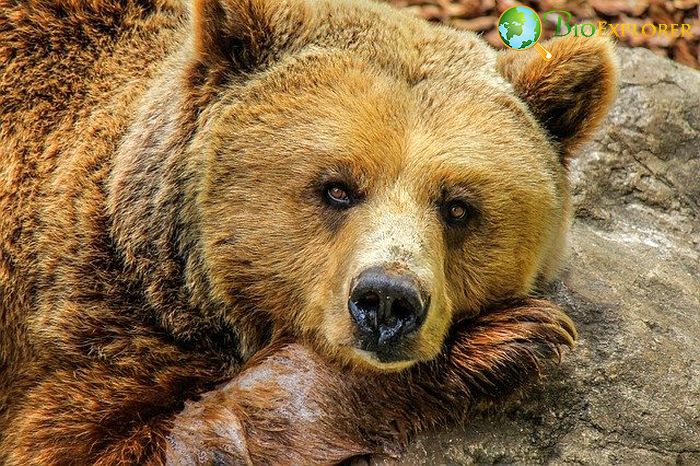
Brown bears inhabit a variety of habitats ranging from deserts, high mountain forests to ice edges. These large animals are also referred to as grizzly bears, and they can grow up to 8 meters tall when standing on their rear feet.
| Animalia | Carnivora | Ursidae | Ursus | Ursus arctos |
- Brown bears are generalist feeders, consuming anything nutritious. Their diet entails berries, nuts, moss, grasses, sedges, roots, insects, fungi, ground squirrels, mice, and marmots, salmon, mountain, and goats, to name a few.
- One hunting strategy that has turned out to be useful for the brown bears is digging out their potential prey from their burrows or hideouts using their long claws. This strategy helps brown bears capture mice or ground squirrels.
- These animals also stalk larger mammals like elks to identify the weakest or youngest family members, which they charge on to capture and eat.
![]()
What Do Sloth Bears eat?
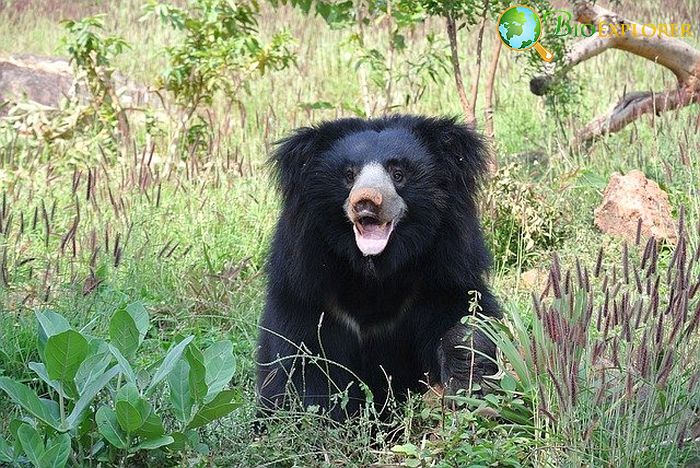
The sloth bears are notable for their shaggy-black coats and strong claws. These unique bears inhabit South Asia’s forests. They have two subspecies, namely the Indian sloth bear and the Sri Lankan sloth bear.
| Animalia | Carnivora | Ursidae | Melursus | Melursus ursinus |
- The sloth bear species is well-adapted to feed on insects, particularly termites and ants.
- The sloth bear can also be found at times consuming fruits.
- When hunting, the sloth bears close their noses and use their lips like a vacuum to dig out and suck termites or ants from their hideouts.
![]()
What Do Spectacled Bears eat?
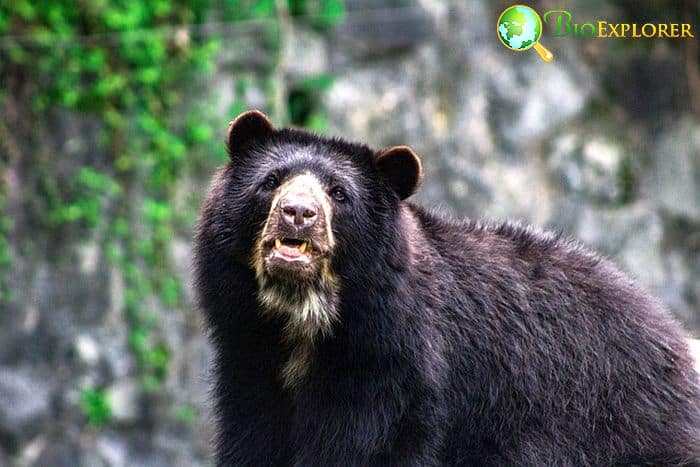
The spectacled bear is also referred to as the Andean bear. It is the only bear species found in South America in Venezuela, Peru, Colombia, Bolivia, and Ecuador.
| Animalia | Carnivora | Ursidae | Tremarctos | Tremarctos ornatus |
- The Andean bear’s white or brown markings that encircle the eyes offer clues to their name as spectacled bears.
- The Andean bear is primarily vegetarian, which means it will often be found feeding on berries, cacti, fungi, bromeliads, palm nuts, and other fruits.
- On some occasions, these bears will supplement their diet with meat drawn from insects, birds, small cows, and small rodents.
- When hunting for meat, the Andean bear’s strong sense of smell helps it locate its prey, often small animals and insects, stalk them and hunt unsuspecting targets.
![]()
What Do Sun Bears Eat?
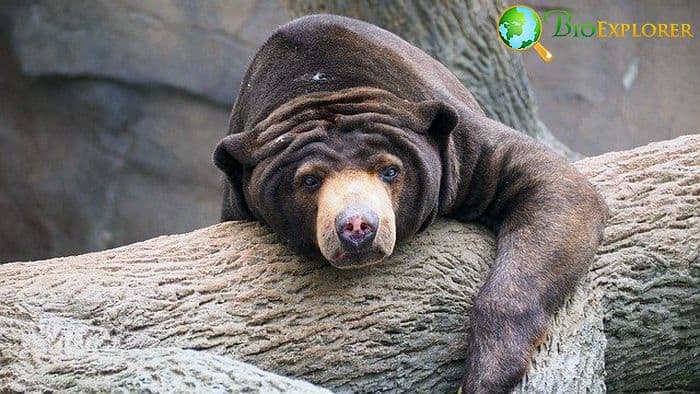
Sun bears are one of the eight extant bear species that are endemic to South East Asia. These bears are the smallest bear species, growing to about 5 feet and weighing almost 150 pounds.
- Sun bears are omnivorous, preferring a diet of berries, fruits, roots, other vegetation, and a meaty delicacy obtained from hunting insects, rodents, lizards, and small birds.
- The sun bear’s strong sense of smell has been proven useful in their hunting strategy because it helps them detect and locate their prey from miles away before launching an attack on them.
![]()
What Do American Black Bears eat?
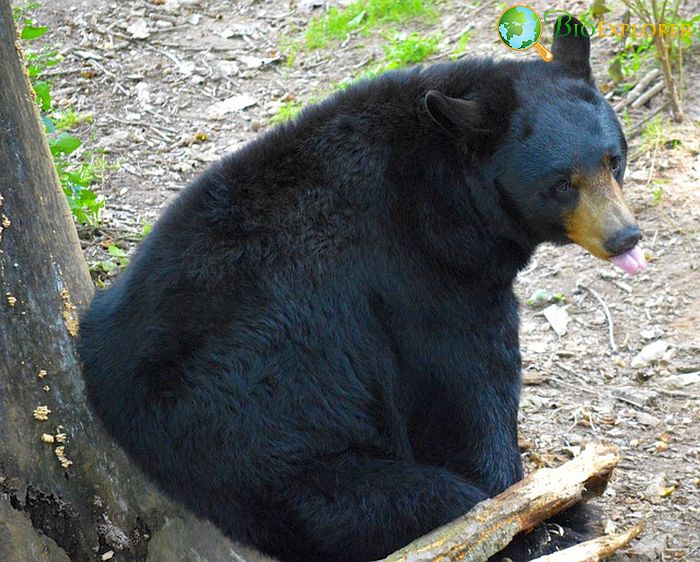
The North American black bears are one of the three bear species found in the United States. It is also the most common and widespread in the region.
| Animalia | Carnivora | Ursidae | Ursus | Ursus americanus |
- The North American bear has subspecies, namely the Louisiana and Florida black bears.
- About 75% of the North American black bear’s diet comprises plant matter, mainly fruits and vegetables.
- The preferred delicacies include berries, tubers, nuts, acorns, roots, sapwood, and grass. The remaining 25% of the North American black bear’s diet is supplemented by meat obtained from bird eggs, rodents, insects, fish, and larger mammals.
- The North American black bears rely on their strong sense of smell to hunt.
- These animals can detect animals from miles away, which they then stalk before ambushing and killing them.
![]()
What Do Panda Bears Eat?
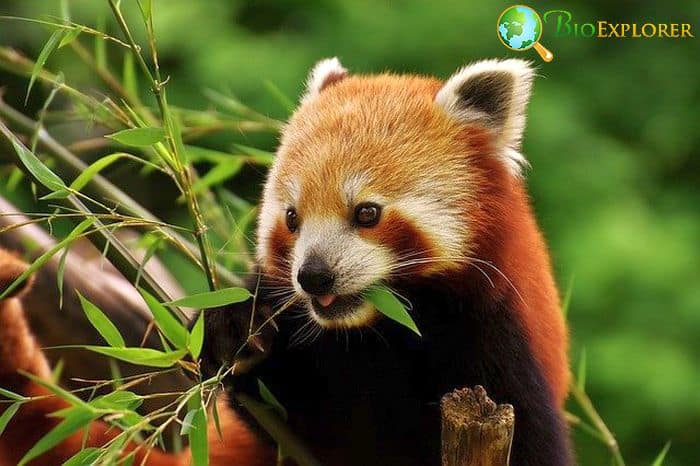
Panda bears are endemic to the south-central parts of China. This bear species will often be found occupying temperate montane forests with a dense bamboo concentration, which makes up 99% of their diet.
| Animalia | Carnivora | Ursidae | Ailuropoda | Ailuropoda melanoleuca |
- Panda bears spend about 55% of the day chewing bamboo shoots, stems and leaves.
- These bears consume about 60 bamboo species, with 35 of these being their primary food source. Interestingly, the utilization of the different bamboo species occurs at varying elevational bands and the season.
- About 1% of the pandas‘ diet is composed of other sources of nutrition, including meats.
- Pandas have been noted to occasionally feed on pikas and other small rodents to supplement their bamboo diet.
- Their strong sense of smell, a common feature with the other bear species, helps the panda bears detect, stalk and hunt pikas and other small rodents.
![]()
When Do Bears Eat?
The time the different bear species are active varies significantly.
- Some species display nocturnal tendencies, while others are crepuscular.
- Others are active during the day with the example of the polar, which will often be seen hunting during the daylight hours.
- The spectacled bear is an example of a nocturnal species. In contrast, the grizzly and black bears are considered to be both crepuscular and diurnal.
![]()
How Often Do Bears Eat?
Bears will eat as often as they can as long as they meet their daily energy requirement.
- It is also worth noting that the daily food threshold varies depending on the species. For example, the brown bears living in Alaska consume anything between 80 and 90 pounds of food per day.
- Polar bears, on the other hand, require about 2kg of fat a day to survive.
- Panda bears, which mostly feed on bamboo, which has low nutritional value, and in this case, they must consume about 26-84 pounds of food per day.
- The majority of food consumption in most bear species is highest during summer and fall, which is a strategic move because it helps them build their fat stores in preparation for the harsh winter season.
![]()
What Eats Bears?
Bears are at the apex of the food chain in their ecosystem, and so in their adult stage, it is unlikely that they will succumb to predation.
- However, it is worth noting that large cats will mostly likely predate on bears found roaming in their ecosystems, especially in their juvenile stages.
![]()
Do Bears Predate Humans?
Bears, particularly the black bear species, can attack humans and consider them prey, although this is uncommon.
![]()
What Role Do Bears Play in the Animal Food Chain?
Bears play an instrumental role in the animal food chain.
- These large mammals feed on a vast range of animals, including but not limited to insect larvae, migrating fish, seals, small vertebrates, and birds.
- In this role, they help regulate these animals’ local populations, thus keeping them from overpopulating.
![]()
The presence of bears is, therefore, an indication of a thriving ecosystem, which is well-balanced.
![]()



